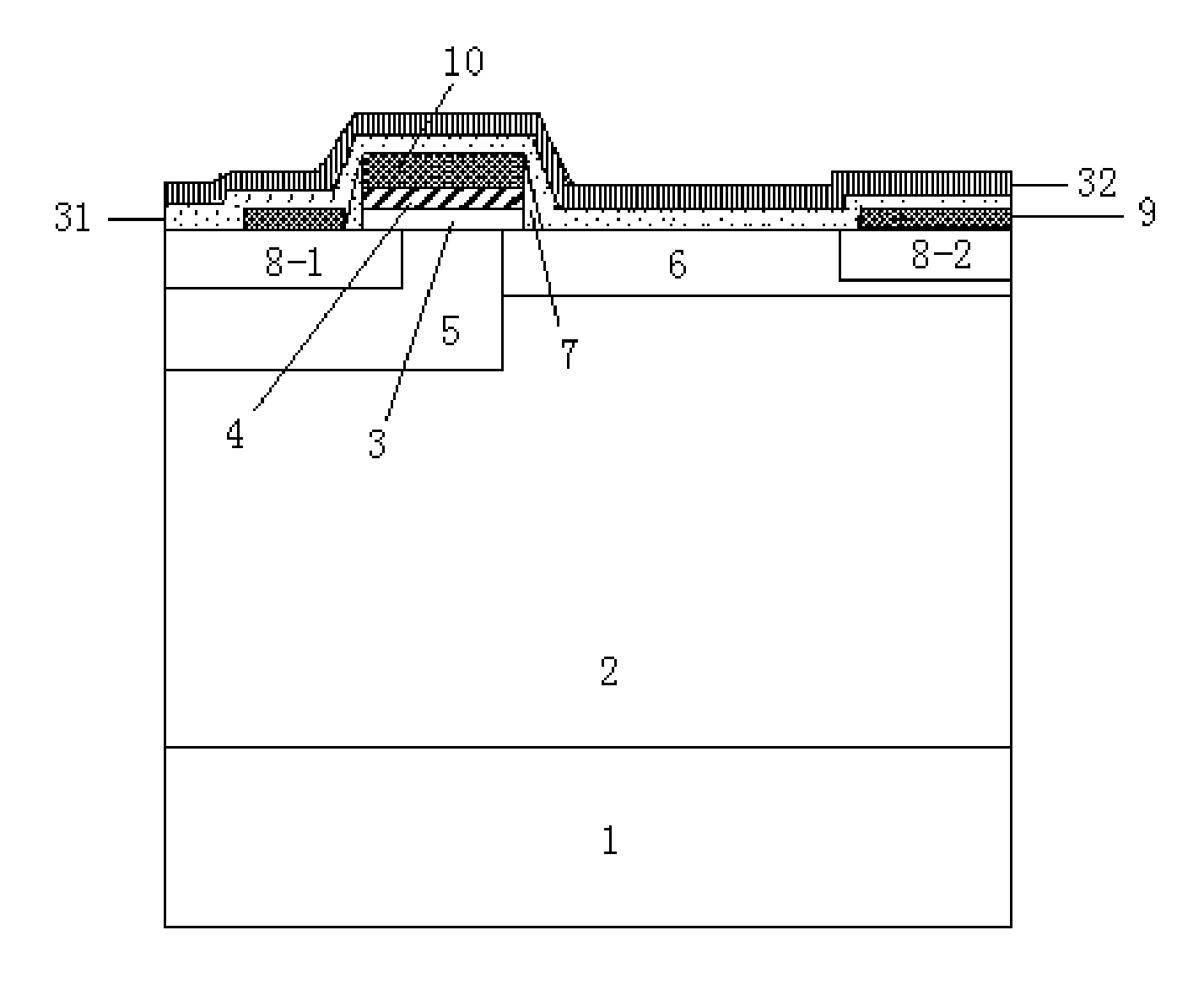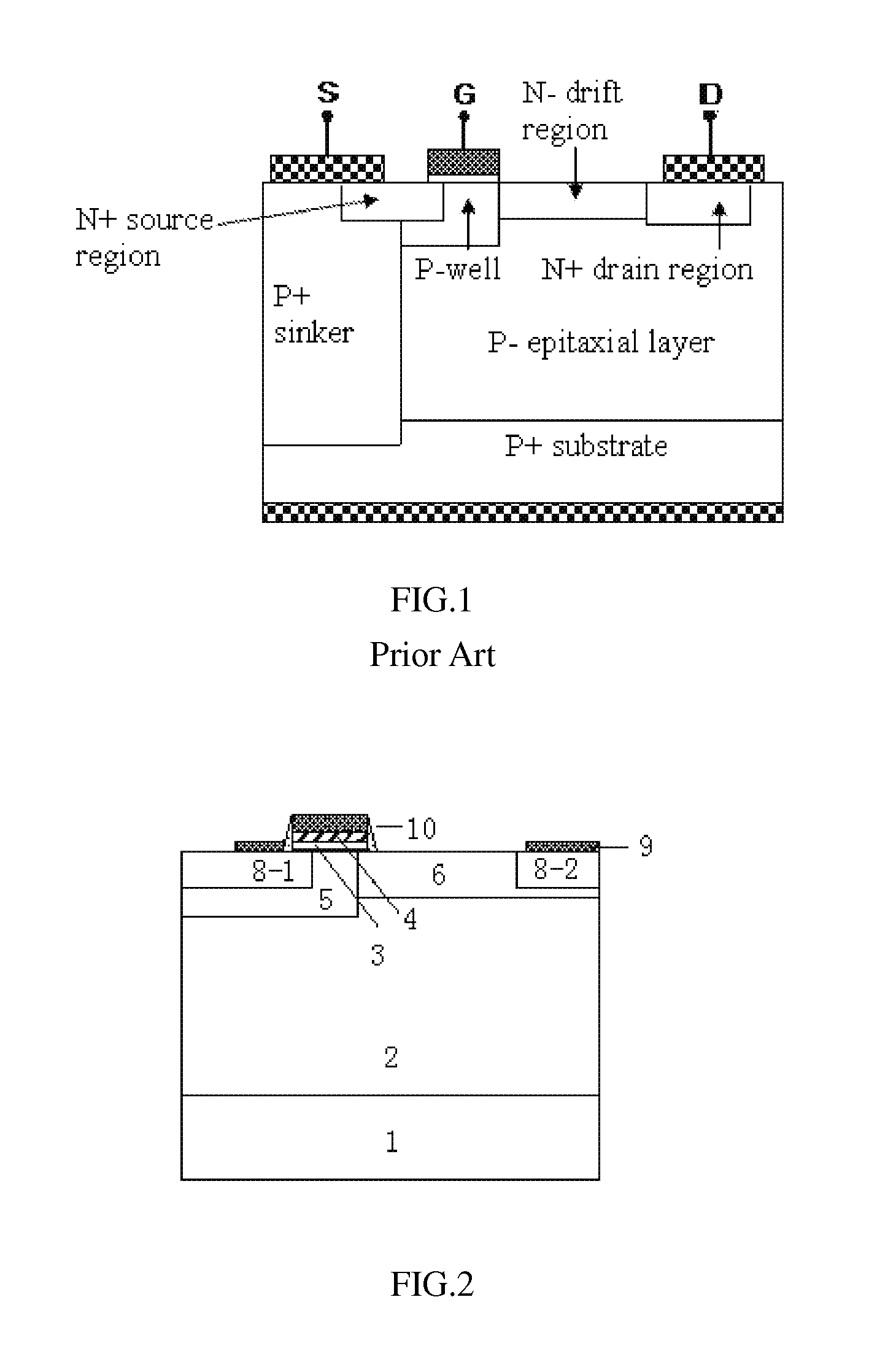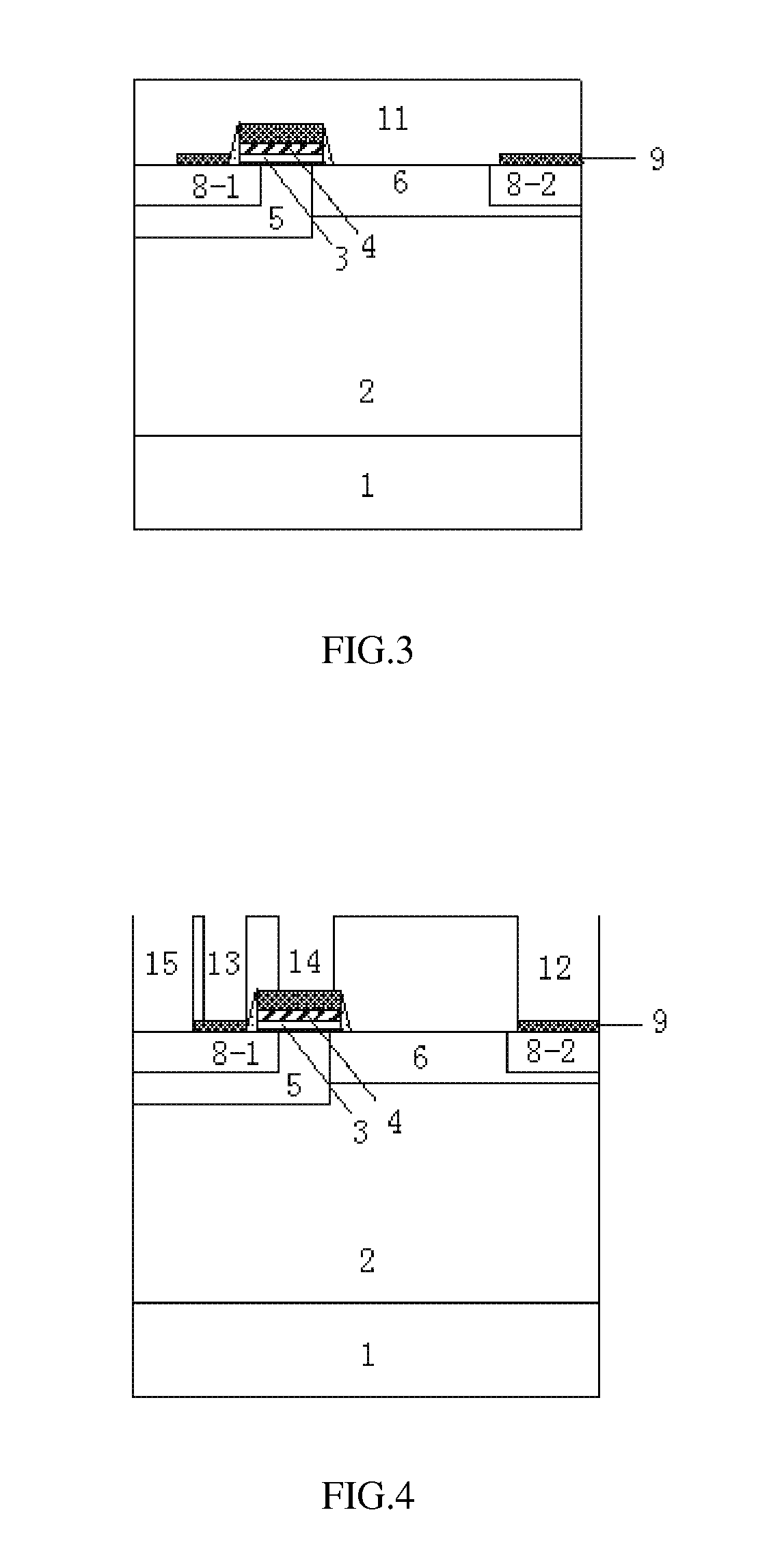Semiconductor device and method for fabricating the same
a technology of semiconductor devices and sinkers, which is applied in the direction of semiconductor devices, basic electric elements, electrical appliances, etc., can solve the problems of affecting the performance of the device, the p+ polysilicon process is not mature, and the device is difficult to shrink the area, so as to reduce the lateral size of the occupied area, improve the device performance, and reduce the resistance
- Summary
- Abstract
- Description
- Claims
- Application Information
AI Technical Summary
Benefits of technology
Problems solved by technology
Method used
Image
Examples
embodiment 1
[0079]In this embodiment, a semiconductor device embodying the present invention may be fabricated using a method including the steps discussed in detail below.
[0080]Turning now to FIG. 2, in a first step of the method, a P− epitaxial layer 2 is formed over a P+ substrate 1 (which is typically doped with boron and has a resistivity of 0.01 Ω·cm to 0.02 Ω·cm). Thickness and doping concentration of the epitaxial layer may be determined by the designed voltage endurance of the semiconductor device being fabricated. For example, a P− epitaxial layer 2 with a resistivity of 10 Ω·cm to 20 Ω·cm and a thickness of 5 μm to 8 μm may be formed to achieve a voltage endurance of 60 V for the device. Next, a gate silicon oxide film 3 having a thickness of, for example, 150 Å to 1000 Å, is deposited over the P-epitaxial layer 2. Moreover, a polysilicon film with a thickness of 1000 Å to 6000 Å is deposited over the gate silicon oxide film 3. Thereafter, a polysilicon gate 4 is formed by a photolit...
embodiment 2
[0089]This embodiment provides a method that differs from the method of Embodiment 1 only in that, in the fourth step, with reference to FIG. 5a, photoresist 15-1 is first coated on the top face of the intermediate dielectric layer 11, filling the drain contact hole 12, the source contact hole 13 and the gate trench 14; next, the deep trench 151 is formed by etching a portion of the P− epitaxial layer 2 exposed in the dielectric trench 15 while the holes and trenches other than the dielectric trench 15 is being protected; and thereafter, P-type ions are implanted into side faces of the deep trench 151 by tilted implantation with an ion concentration of 5E17 cm−3 to 5E19 cm−3. This method can lead to further reduction of the contact resistance between the P-type material and the filler metal and hence an improvement of the performance of the resulting device.
embodiment 3
[0090]This embodiment provides a method that differs from the method of Embodiment 1 only in that, in the third step, only the drain contact hole 12, the source contact hole 13 and the gate trench 14 are formed, and that in the fourth step, a metal plug area is first opened by photolithography to define the dielectric trench 15 while the drain contact hole 12, the source contact hole 13 and the gate trench 14 are being protected by the photoresist 15-1, and then the dielectric trench 15 and the deep trench 151 are formed by etching the intermediate dielectric layer 11 and the P− epitaxial layer 2.
Embodiment 4
[0091]This embodiment provides a method that differs from the method of Embodiment 1 only in that, in the third step, only the drain contact hole 12 and the source contact hole 13 are formed, and that in the fourth step, an area above the polysilicon gate 4 and a metal plug area are first opened by photolithography to define the gate trench 14 and the dielectric trench 15, respe...
PUM
| Property | Measurement | Unit |
|---|---|---|
| thickness | aaaaa | aaaaa |
| voltage endurance | aaaaa | aaaaa |
| resistivity | aaaaa | aaaaa |
Abstract
Description
Claims
Application Information
 Login to View More
Login to View More - R&D
- Intellectual Property
- Life Sciences
- Materials
- Tech Scout
- Unparalleled Data Quality
- Higher Quality Content
- 60% Fewer Hallucinations
Browse by: Latest US Patents, China's latest patents, Technical Efficacy Thesaurus, Application Domain, Technology Topic, Popular Technical Reports.
© 2025 PatSnap. All rights reserved.Legal|Privacy policy|Modern Slavery Act Transparency Statement|Sitemap|About US| Contact US: help@patsnap.com



